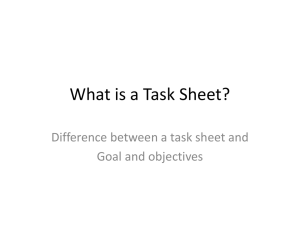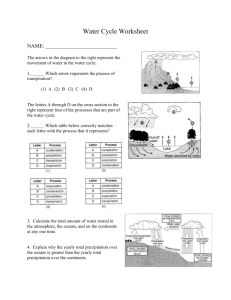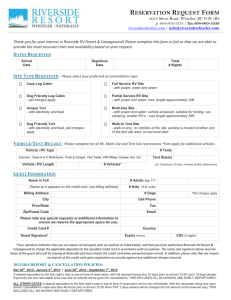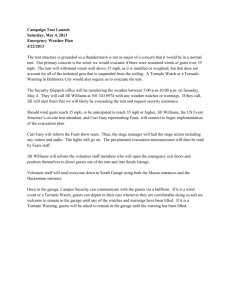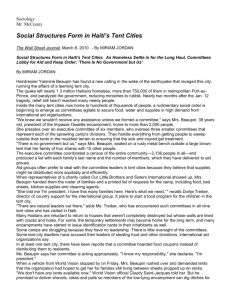Antarctica Heat Wave
advertisement
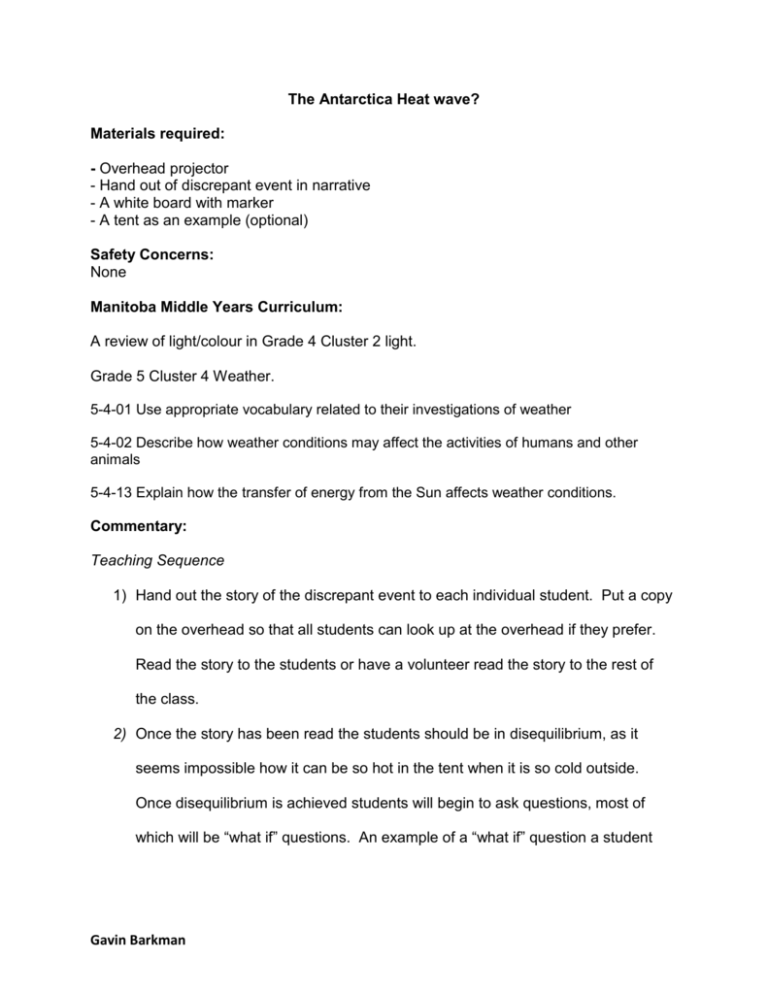
The Antarctica Heat wave? Materials required: - Overhead projector - Hand out of discrepant event in narrative - A white board with marker - A tent as an example (optional) Safety Concerns: None Manitoba Middle Years Curriculum: A review of light/colour in Grade 4 Cluster 2 light. Grade 5 Cluster 4 Weather. 5-4-01 Use appropriate vocabulary related to their investigations of weather 5-4-02 Describe how weather conditions may affect the activities of humans and other animals 5-4-13 Explain how the transfer of energy from the Sun affects weather conditions. Commentary: Teaching Sequence 1) Hand out the story of the discrepant event to each individual student. Put a copy on the overhead so that all students can look up at the overhead if they prefer. Read the story to the students or have a volunteer read the story to the rest of the class. 2) Once the story has been read the students should be in disequilibrium, as it seems impossible how it can be so hot in the tent when it is so cold outside. Once disequilibrium is achieved students will begin to ask questions, most of which will be “what if” questions. An example of a “what if” question a student Gavin Barkman may ask is what if the tent was a different color such as yellow. This begins the Predict-Explain-Observe-Explain approach. 3) Take the question a student had such as what if the tent was a different color and ask the students to predict what would happen. Then ask for a volunteer to say why they think that particular prediction will happen (Explain). If a student were to ask this question, you could tell students that they will conduct an experiment next class where they will make boxes out of different color of construction paper and put ice cubes in these boxes out in the sun. Whichever ice cube melts the fastest would suggest that that color absorbs sunlight best. This will answer the question of what would happen with a yellow tent (yellow construction paper) (observe). After conducting this experiment it is time for you as the teacher to explain the science behind the discrepant event (Explain). The Science (Working towards equilibrium) 1) Draw a simple diagram of the tent in Antarctica on the whiteboard. Have the students copy this diagram into their science notebooks and have them label it with help from you, the teacher. Now explain to the students why the tent got so hot inside. Talk about how the energy from the sun is both absorbed and reflected by the tent. Discuss how darker colors absorb more of the suns energy therefore producing more heat. The lighter the colour the less sunlight is being absorbed and the more is being reflected resulting in less heat (Explain). You could then discuss this is one of the reasons why it is so cold in Antarctica, even in the summertime. Since Antarctica is covered in white snow and ice, Gavin Barkman even though it is sunny for 24 hours a day in summer, most of the energy from the sunlight is being reflected back into space. Concluding Questions Based on Bloom’s Taxonomy 1. Define the terms absorption and reflection? (Knowledge) 2. What do you think would have happened if Johnny and Ralph used a tent of a lighter color such as Yellow? (Comprehension) 3. Why does it get so hot inside the black tent even though it is so cold outside? (Application) 4. Do you think that the size of the tent has anything to do with how hot it got? (Synthesis) 5. What other changes to the environment besides the color and size of the tent do you think would change the outcome? (Evaluation) Origins I go the idea of this discrepant event reading the article from the website http://www.sciencenewsforkids.org/articles/20080723/Note3.asp , which is designed for kids. Gavin Barkman Antarctic Heat Wave? Johnny and Ralph were brothers, and they both had a desire to become scientists. Once they realized their dreams of becoming scientists, they received money from the government to do some research in Antarctica. Antarctica is known to be the coldest place on earth, and Johnny was very nervous about how they would keep warm while sleeping. Antarctica is located south of the arctic circle at the south pole. During the winter months it remains dark 24 hours a day and during the summer months, it is sunny and bright 24 hours a day. Johnny and Ralph arrived in Antarctica in summer where the average temperatures are about -7°C. However, on this particular day, it was an even colder -15°C, and the wind was very strong. After a long day of observing and calculating data for their research, they decided it was time to go to sleep. Ralph was in charge of the sleeping arrangements. To the surprise of Johnny, Ralph had only brought a large black tent along with a couple of sleeping bags. Ralph had assured Johnny that it would not be too cold during the night and that he should stop worrying. Johnny still didn’t know how they would stay warm when the weather was so cold and windy outside. Ralph and Johnny began to put up their tent, which was dark black in color. Johnny sure wished that Ralph had brought a heater or something to keep them warm during the night. Johnny decided to hang a thermometer inside the tent so that he would know how cold it was during the night. It was chilly inside the tent at first, and it took a while for Johnny and Ralph to finally fall asleep. Gavin Barkman Johnny woke up in the morning in a sweat. Johnny quickly ran outside, as he could hardly stand the heat inside the tent. Johnny went back inside the tent and looked at the thermometer that they had hung inside the tent. The thermometer read 35° C. Johnny could hardly believe his eyes, how could it be so hot inside the tent and yet so cold on the outside. Johnny could now enjoy the rest of his stay in Antarctica. Gavin Barkman
